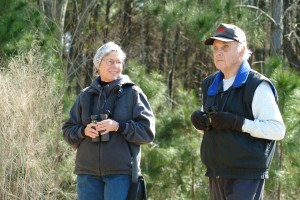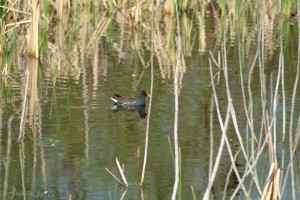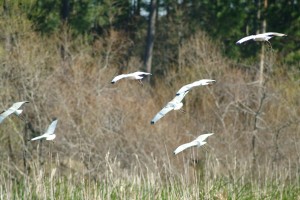Northern Harrier
Tuesday, December 31st, 2013After a cloudy, gray day, the sun set tonight with very little color, only the faintest pale peach among the pale clouds, no fireworks in the sky to mark this last day of the year, just a quiet sinking, and swift fading of light into dark.
The most memorable part of the day for me, in the end, was watching a Northern Harrier fly low over fields beside a road on my way to the grocery store. It was clear enough to identify, but never close enough to see really well, remaining just a little too far in the distance. Though we used to see them often in the winter, a Northern Harrier is a much less common sight now, so I pulled to the side of the road to watch. There was almost no traffic on this road at the time, though other, nearby roads were busy. The Harrier appeared to be gray, and it flew low over the fields, flapping its long wings often, then sailing low, a large, slender, graceful gray bird against a murky gray sky. It never came very close, and steadily moved further away until it moved out of sight.
Even though it wasn’t a close or dramatic sighting, seeing the Northern Harrier seemed a beautiful way to end the year. I could see it as a ghostly, shadowy bird, because in truth, Harriers may be fading into the past, along with so many other birds of open places. Though populations of Northern Harriers are still widespread in North America, numbers have been declining for several decades, mainly because of habitat loss.
Or I might see it as a hopeful sign, that even with all the changes here, the steady loss of wetlands, fields and pastures to more development, more roads, more traffic – still there is a Northern Harrier flying over a field of withered stubble and grass and weeds, and it was wild and beautiful to watch.


